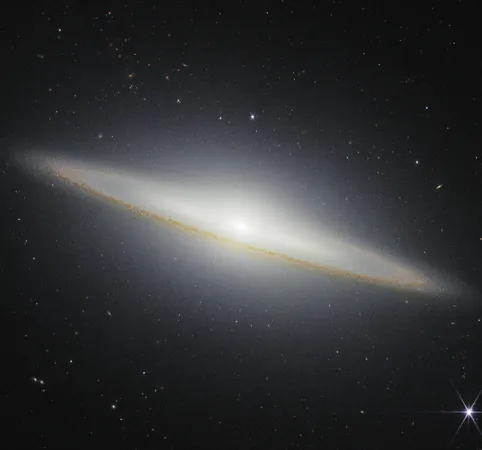
Asteroid Samples: Why They Matter More Than You Think
2025-05-13
Author: Amelia
China's Ambitious Mission to Kamoʻoalewa
China is gearing up for its groundbreaking Tianwen-2 mission, set to launch this May 2025, aiming to return samples from the intriguing asteroid Kamoʻoalewa (2016 HO3). This puts China in the same league as the United States and Japan, who have already successfully returned asteroid samples for Earth-based analysis.
Why Sample Collection Is Crucial for Science
While various missions have previously flown by asteroids to analyze their compositions from afar, actually returning samples to Earth is a giant leap forward for researchers. Hands-on examination of these samples allows scientists to conduct detailed analyses—whether it be poking and prodding them, subjecting them to light, or scanning them with CT and electron microscopes.
1. Ryugu: A Colorful Mystery Unveiled
Take the asteroid Ryugu, a target of Japan's Hayabusa2 mission in 2020. Scientists discovered that debris ejected from the asteroid was noticeably redder than the surface, suggesting changes in its exposure to solar radiation. As planetary scientist Paul K. Byrne pointed out, this hints that Ryugu might have once been closer to the Sun, providing insights into its unique coloration.
2. The Fascinating Physics of Sample Return Capsules
NASA's OSIRIS-REx mission, which successfully returned a sample from the carbon-rich asteroid Bennu in September 2023, offered unexpected scientific riches even before researchers opened the capsule. The reentry of the capsule mimicked meteorite impacts, allowing scientists to gather invaluable data on how meteoroids behave when entering Earth's atmosphere. Insights from this can improve hazard detection for natural disasters.
3. Water-Rich Clays and the Origins of Life
Once back on solid ground, the OSIRIS-REx samples revealed an astonishing composition of water-rich clay along with previously unseen evaporite minerals—crucial to understanding Bennu's wet past. This suggests that Bennu may have been an environment conducive to organic molecule formation, fueling theories that Earth’s building blocks of life could have come from asteroids like it.
4. A Future of Asteroid Mining?
As we peel back the layers of knowledge gained from these missions, we also look to the future of asteroid mining. While missions like the Psyche mission, launched in 2023, aim to explore metallic asteroids rich in platinum and possibly gold, full-fledged commercial asteroid mining is still a distant dream. Nevertheless, the groundwork laid by sample return missions could lead to the day when mining asteroids becomes a reality—if the legal challenges can be navigated.
Conclusion: A New Frontier Awaits
The exploration of asteroid samples isn’t just about mining potential—it's about understanding the building blocks of our solar system. Each mission unravels new mysteries and adds to our cosmic knowledge, proving that every piece of space rock we collect holds the potential to revolutionize our understanding of the universe.









 Brasil (PT)
Brasil (PT)
 Canada (EN)
Canada (EN)
 Chile (ES)
Chile (ES)
 Česko (CS)
Česko (CS)
 대한민국 (KO)
대한민국 (KO)
 España (ES)
España (ES)
 France (FR)
France (FR)
 Hong Kong (EN)
Hong Kong (EN)
 Italia (IT)
Italia (IT)
 日本 (JA)
日本 (JA)
 Magyarország (HU)
Magyarország (HU)
 Norge (NO)
Norge (NO)
 Polska (PL)
Polska (PL)
 Schweiz (DE)
Schweiz (DE)
 Singapore (EN)
Singapore (EN)
 Sverige (SV)
Sverige (SV)
 Suomi (FI)
Suomi (FI)
 Türkiye (TR)
Türkiye (TR)
 الإمارات العربية المتحدة (AR)
الإمارات العربية المتحدة (AR)